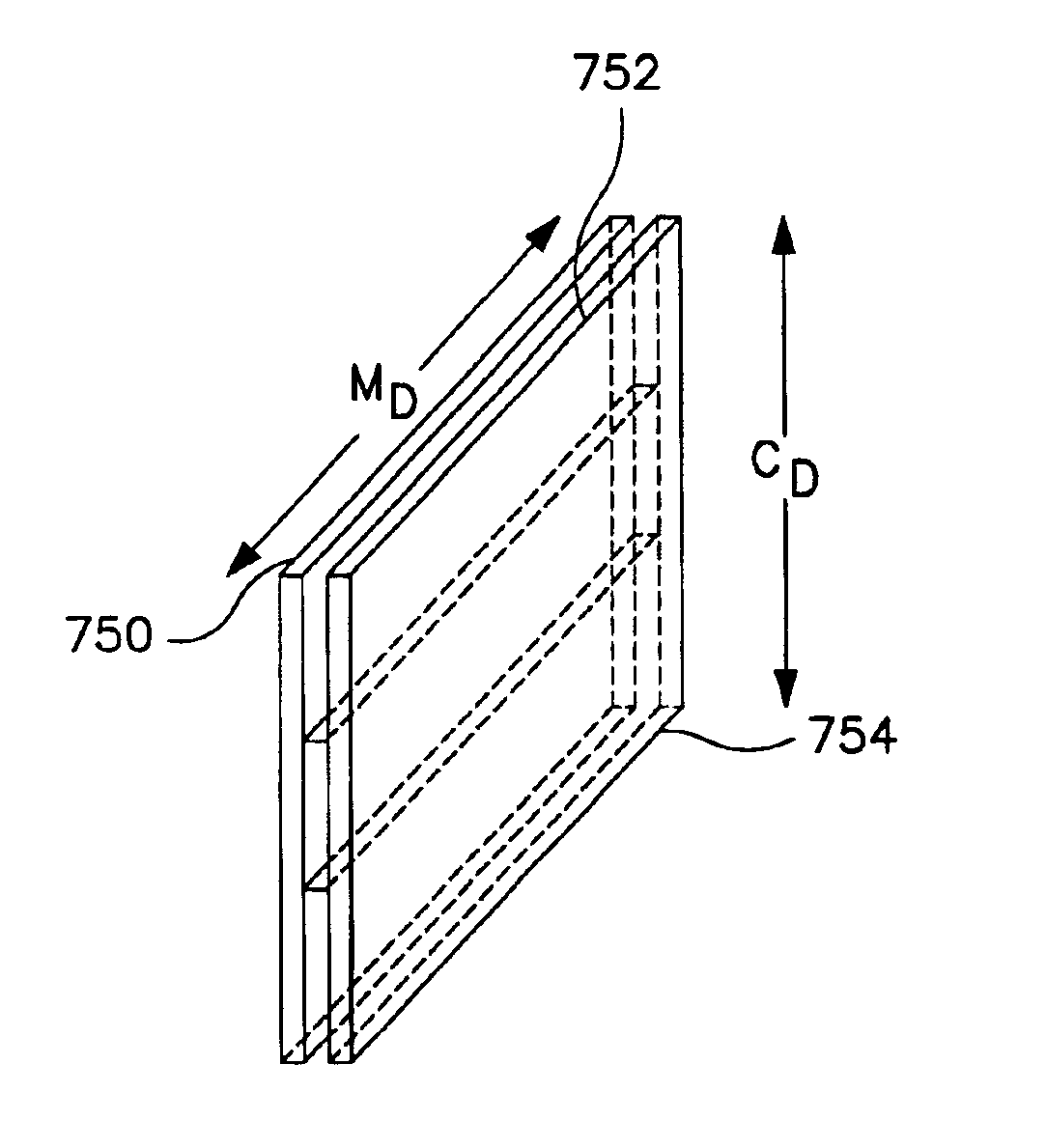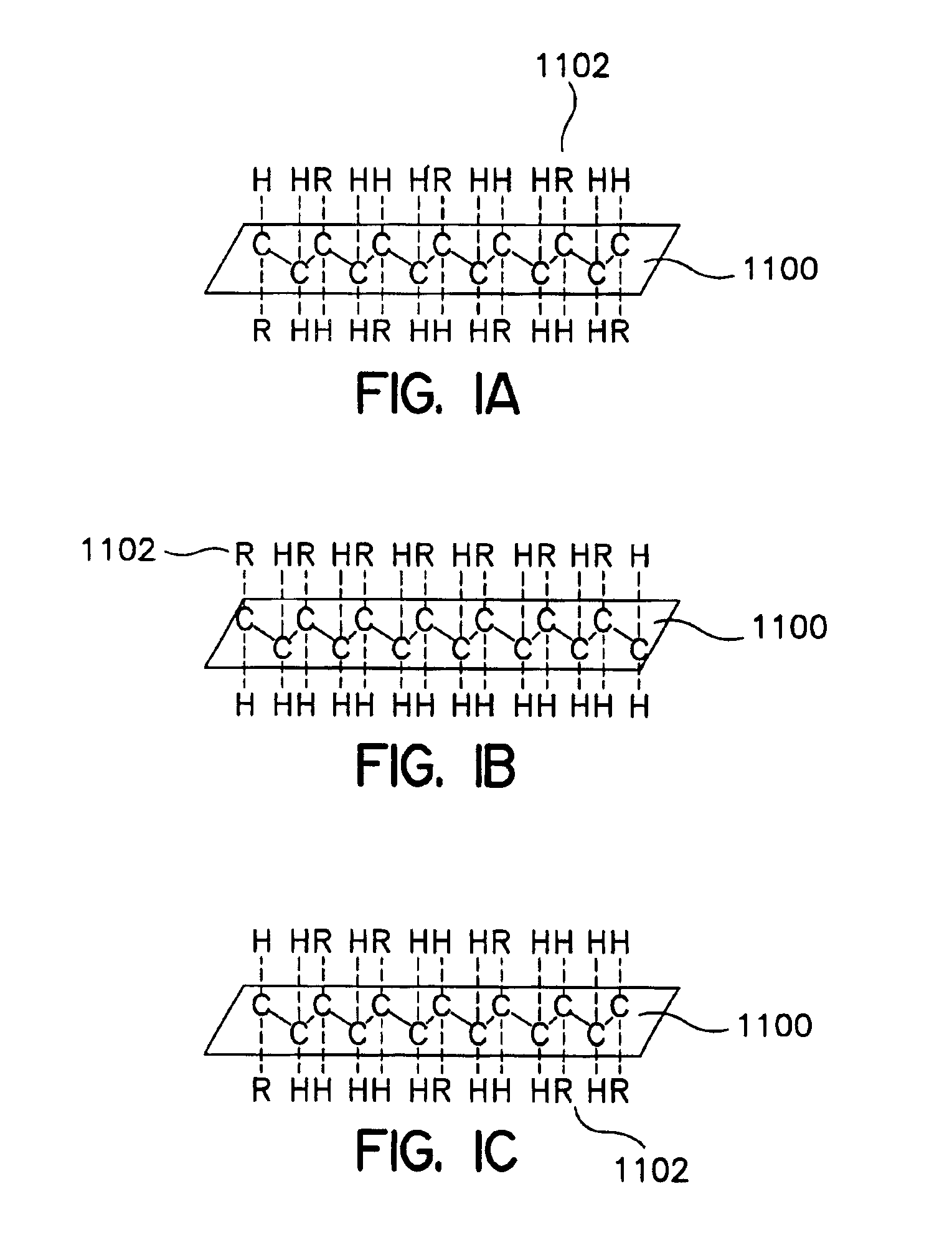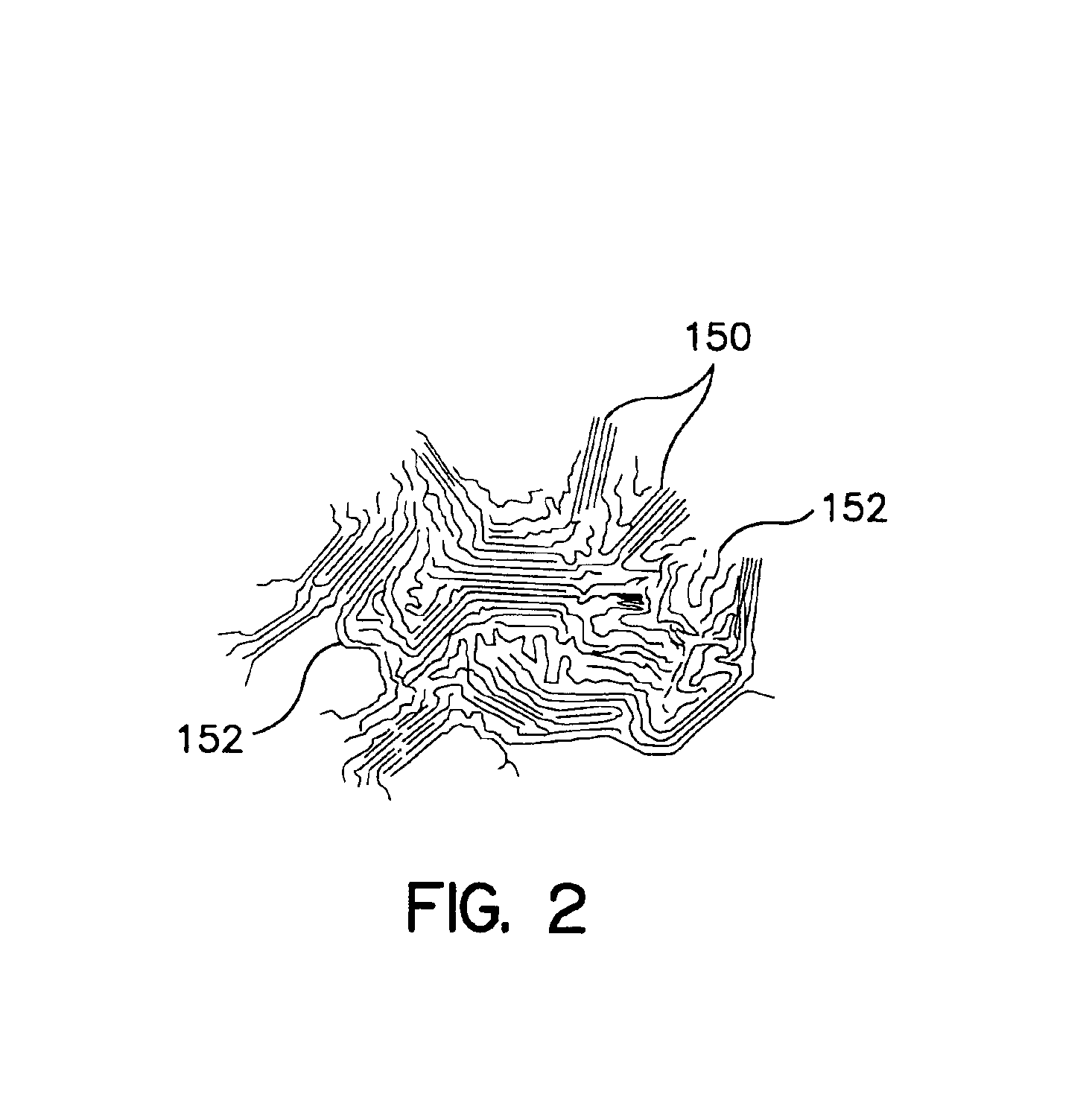Modified rubber-based adhesives
- Summary
- Abstract
- Description
- Claims
- Application Information
AI Technical Summary
Benefits of technology
Problems solved by technology
Method used
Image
Examples
example 1
The ability of the elastic attachment adhesives of the invention to hold an elastic strand in place under tension (200-300% elongation) was measured by the Creep Resistance Test, described above. More particularly, the creeping of a blend of 86% NS 5610 and 14% isotactic polypropylene (“I-PP”) was compared to the creeping of NS 5610 alone; the creeping of a blend of 82% H2525A and 18% I-PP was compared to the creeping of H2525A alone; and the creeping of a blend of 85% H2800 and 15% I-PP was compared to the creeping of H2525A alone.
Each of the adhesive compositions tested in this example were tested with an elastic strand of LYCRA® 940 (available from E. I. Du Pont de Nemours and Company of Wilmington, Del.) laminated between two polypropylene spunbonded layers, with the adhesive applied with an ITW application at 7.5 grams per square meter (gsm). Each of the adhesive compositions tested in this example were also tested with an elastic strand of GLOSPAN® 1120 (available from Globe M...
example 2
Creep resistance of H2525A applied to LYCRA® 940 with an ITW application was tested in Example 1, with a resulting aging creeping of 41.7%, as shown in Table 1. In this Example, the same test was performed on a sample of H2525A melt-blown onto LYCRA®940, and also on a sample of H2525A applied to LYCRA® 940 in a swirl application, both at an add-on of 7.5 gsm. Results of these tests, in comparison to the ITW application, are shown in Table 2, below.
TABLE 2Creeping Resistance Test DataAgingAdhesiveElastic StrandApplicationCreepingH2525ALYCRA ® 940ITW41.7%H2525ALYCRA ® 940meltblown 37%H2525ALYCRA ® 940swirl 80%
Creep resistance of a blend of 82% H2525A and 18% isotactic polypropylene applied to LYCRA® 940 was tested, in accordance with the test procedure in Example 1, but with one sample in which the adhesive was meltblown onto the substrate and another sample in which the adhesive was applied to the substrate in a swirl application, both at an add-on of 5 gsm. Results of these tests ...
example 3
Laminates were made with approximately 0.4 osy polypropylene, spunbonded substrates and adhesive applied in a meltblown pattern at an application level of about 10 grams per square meter. The laminate was then run through ultrasonic-bonding equipment using the procedures described above to determine the accretion value for each of the tested adhesives.
Three different laminates were made and tested simultaneously. A first laminate was made using 100% H2525A. A second laminate was made using a blend of 18% isotactic polypropylene and 82% H2525A. A third laminate was made using a blend of 14% isotactic polypropylene and 86% NS 5610. In the second laminate, build-up on the surfaces of the anvil and horn was reduced more than 40%, to a build-up of 60%, compared to the first laminate of H2525A alone. In the second laminate, build-up was reduced by about 85%, to a build-up of about 15%, compared to the first laminate of H2525A alone.
PUM
| Property | Measurement | Unit |
|---|---|---|
| Fraction | aaaaa | aaaaa |
| Fraction | aaaaa | aaaaa |
| Fraction | aaaaa | aaaaa |
Abstract
Description
Claims
Application Information
 Login to View More
Login to View More - R&D
- Intellectual Property
- Life Sciences
- Materials
- Tech Scout
- Unparalleled Data Quality
- Higher Quality Content
- 60% Fewer Hallucinations
Browse by: Latest US Patents, China's latest patents, Technical Efficacy Thesaurus, Application Domain, Technology Topic, Popular Technical Reports.
© 2025 PatSnap. All rights reserved.Legal|Privacy policy|Modern Slavery Act Transparency Statement|Sitemap|About US| Contact US: help@patsnap.com



